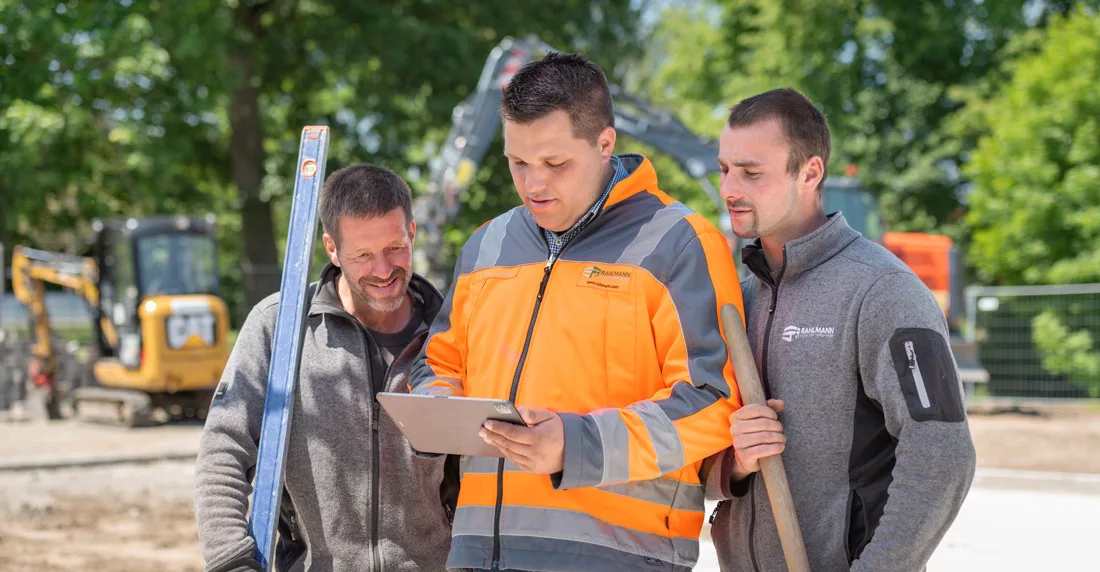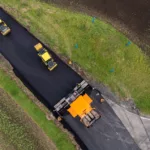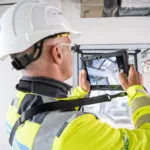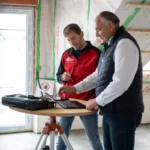
How to select, analyze and evaluate the right tools for you
Drones, robots, artificial intelligence or finally a new software solution – the market for new technology for the construction site is growing rapidly. But how do you find the right products and how do you make the switch? To do this, every construction company – no matter how small – needs something that is nowadays called change management. Stefan Neumann, CEO of 123onsite, says why thorough planning is important, how to involve your employees and benefit from their opinions in the process.
The market for digital technologies is growing rapidly. It’s fascinating and confusing at the same time. How can construction companies judge whether a new tool is the right fit for them? Here are five hints – using new software as an example, but it applies just as much to other technology on the construction site.
Advice 1: What do you want to improve with the new technology? Determine your needs
A lot will change for you and your company with the new technology. In the beginning, you should ask yourself a lot of questions: What do you really need? Where do you want to improve, where is the pressure and where can digital solutions help you? What improvements do you expect from the new system?
There must be a real improvement, otherwise the use of new technologies makes no sense.
ESTIMATE THE RETURN-ON-INVEST
Let’s say you want to use digital time tracking, then you should consider: How much does my time tracking currently cost me? How much effort do employees have to log their times and turn in the slips? How long does it take to manually enter these slips into a system and process them?
It’s worth deriving at least a rough return on investment (ROI) to give you an idea of what a new system will bring you. Every time you switch to new technologies, there should be value behind it. You should critically assess and analyze it at the end: Have your expectations been met?
Hint: There are attractive subsidies for digitization measures.
SET YOURSELF “SMART” GOALS
Maybe you know the abbreviation: the word “Smart” can be read as an acronym. This means that each letter of the word can stand as the initial letter for a word. In this case, the terms are:
- specific
- measurable
- appealing
- realistic and
- terminated
Make your goals smart so you can actually achieve and review them.
Advice 2: Is the new technology promising for the future? Check if there are regular upgrades and updates
In order for you to be able to work with the new technology in the long term, it should be future-proof. When switching, it should be a state-of-the-art system that’s up to date. So when you get a new software system, make sure it’s cloud-enabled so you can access the services from anywhere. If you choose a product from a reputable vendor, you have a better chance that the system will be supported even after many years. A comparison is worthwhile in this case.
Advice 3: Is the software user-friendly or does the new system tend to make more work? Test the software under real conditions
For all employees who work directly with the new technology, user-friendliness is the top priority. You won’t enjoy a software system that promises great features but is not intuitive to use in the long run. Therefore, it is worth trying out a trial version of the software.
Focus on user-friendly software that employees can quickly familiarize themselves with.
Always consider whether you are not just bringing more work into your home with the new system. In the future, an additional employee will have to take care of the software, maintain servers and regularly install updates? A good alternative then is Software-as-a-Service, where you can get by with very little maintenance.
Very important: The proof of the pudding is in the eating and you should always be allowed to pull the ripcord. However, to prevent this from happening, it is best to look for an established provider as a partner. He has mature products, good service and lots of experience from similar projects.
Advice 4: Is everyone in the team pulling together? Take all employees with you during the changeover and address their fears
The introduction of a new technology is often a big change. Change is always difficult for people because they have to say goodbye to the familiar. Therefore, take your employees’ fears seriously. Use approaches from change management and ask: What is the worst thing that could happen as a result of the innovation? You can then pay very special attention to these two or three things during the transition. By doing so, you’ll take out anxiety while preventing your team from feeling insecure.
It also helps to explain to your employees why something is changing and – most importantly – what the benefits are for the company. Employees know that it is also in their own interest that the company continues to develop. Therefore, explain the reasons for the system change so that they understand the opportunities and prospects.
Advice 5: How do you make a habit of working with the new system? Actively accompany the transition
Athletes are familiar with the announcement: You have to perform a movement a thousand times until you really know how to do it. Change management guides often say: You have to do something actively every day for three weeks to turn the change into a habit. Digitization is also a marathon, not a sprint.
You should keep that in mind as you roll out the new software. Change must become a habit for all employees. Therefore, check how they cope with the new tools, ask and evaluate the result.
Therefore, each day take the time to ask employees several times: How do you work with the new system and how does it work? Where are the problems? Above all, go to employees you know will give you their honest opinion. The first few weeks after the transition will determine the success. To do this, you need to know how the changeover works.
And now good luck with choosing the right tools, implementing and working in the new system!








